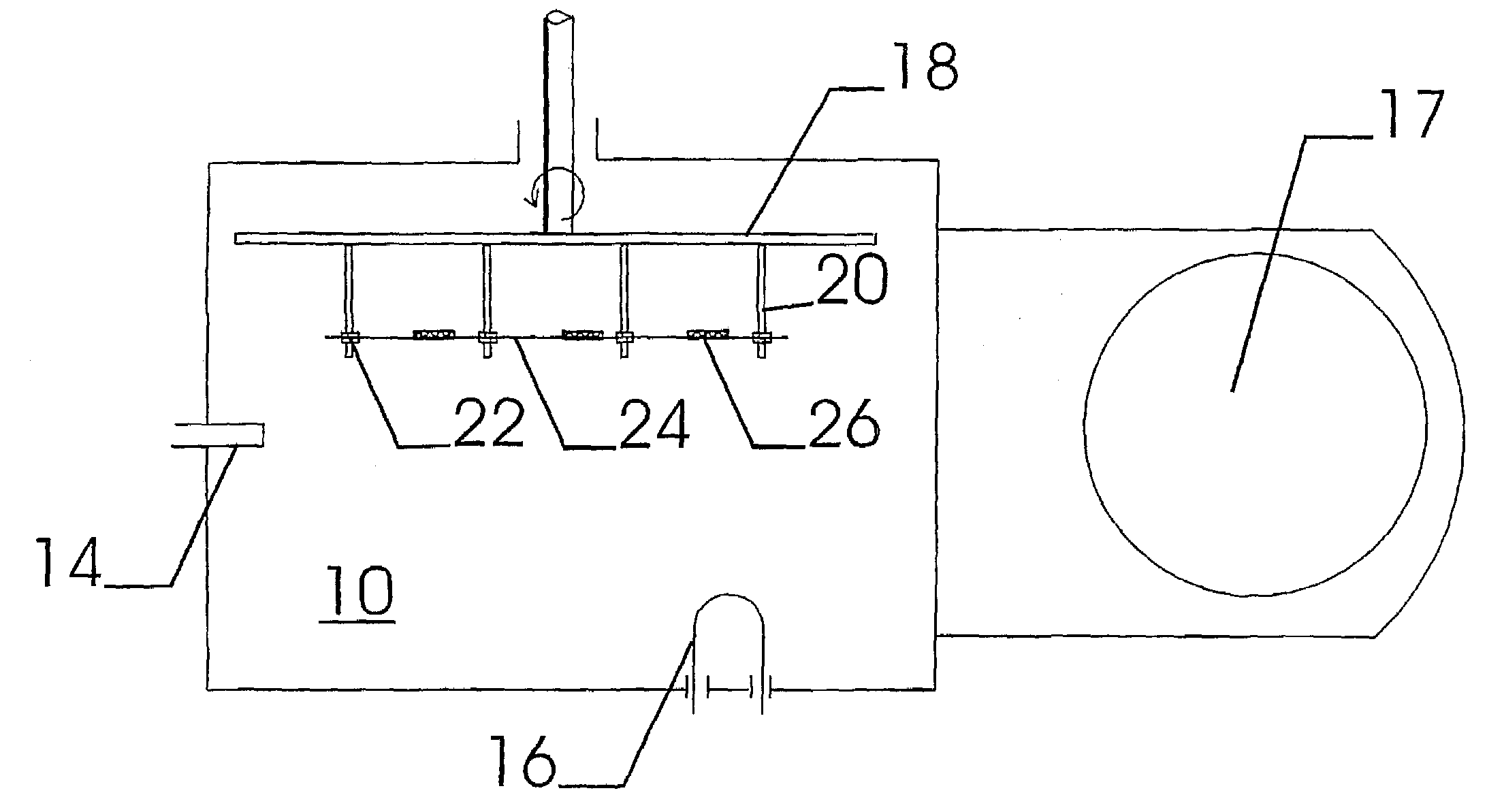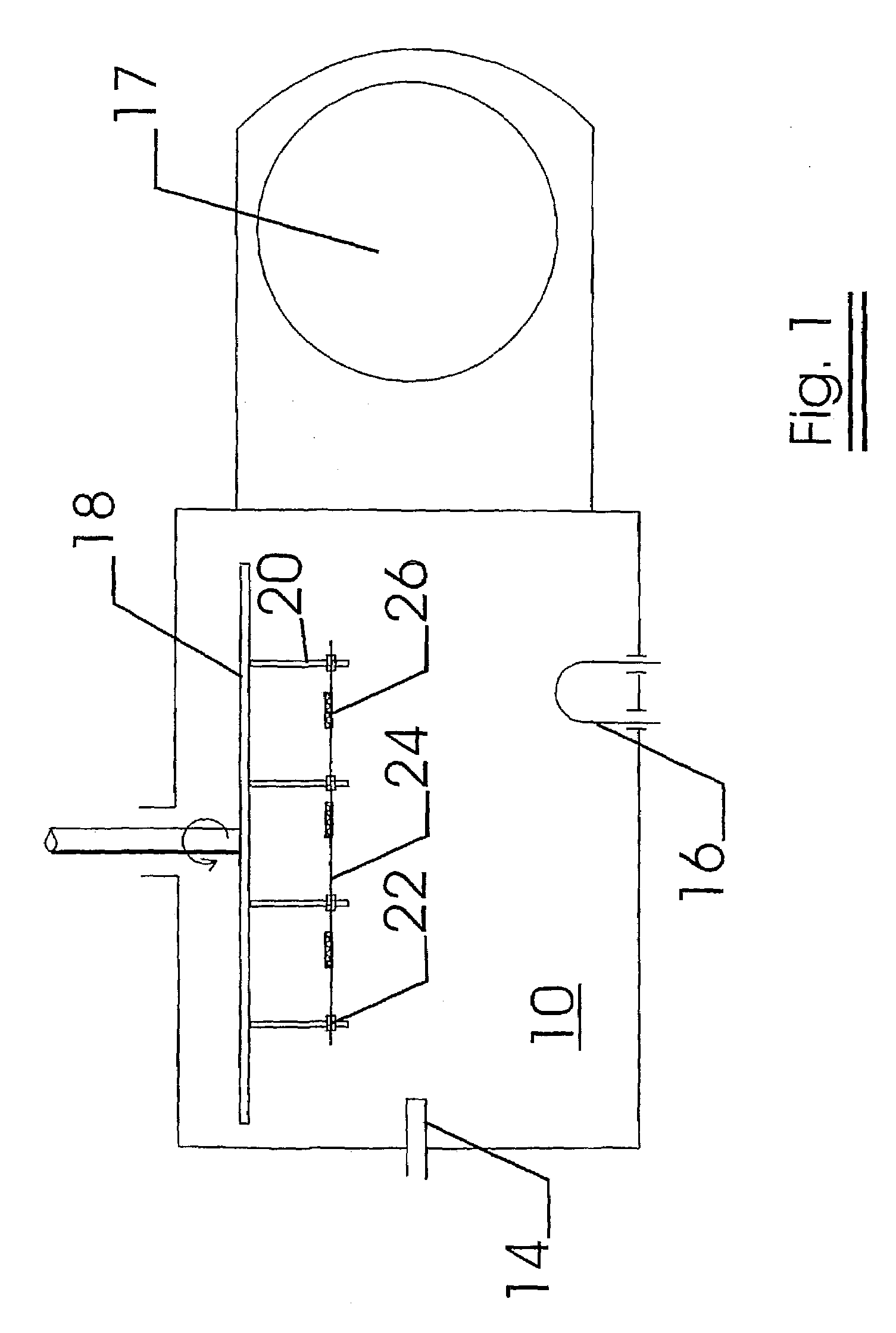Intravascular stent with expandable coating
a technology of stents and coatings, applied in the field of intravascular stents, can solve the problems of adverse tissue reactions, general thrombosis of metals, stainless steel in particular, etc., and achieve the effects of reducing the likelihood of metal ions being leached, high degree of flexibility, and reducing the likelihood of layer cracking
- Summary
- Abstract
- Description
- Claims
- Application Information
AI Technical Summary
Benefits of technology
Problems solved by technology
Method used
Image
Examples
Embodiment Construction
[0016]FIG. 1 shows the main components required for carrying out a PACVD method for coating a stent according to the invention. 10 is the vacuum deposition chamber, 12 is the plasma generation chamber, 14 is an inlet for siloxane vapour, 16 is a resistively heated tungsten electrode, 17 is a vacuum pomp valve and 18 is rotating platen. Rods or posts 20 are fixed to the platen 18. The rods 20 contain threaded nuts 22. The threaded nuts 22 clamp a stainless steel wire 24 with a diameter of about 0.13 mm. The distance between the steel wire 24 and the platen 18 is about 3 cm. Stents 26 are suspended on the steel wire 24. Multiple stents 26 can be coated in this way by using one piece of steel wire 24 for each stent 26 and a pair of rods 20, one at each end of the stent 26.
[0017]The siloxane precursor material is evaporated outside the vacuum chamber and the siloxane vapour is drawn into the vacuum chamber 10 through the inlet 14. The fragmented ions and radicals are deposited on the st...
PUM
| Property | Measurement | Unit |
|---|---|---|
| thickness | aaaaa | aaaaa |
| thickness | aaaaa | aaaaa |
| diameter | aaaaa | aaaaa |
Abstract
Description
Claims
Application Information
 Login to View More
Login to View More - R&D
- Intellectual Property
- Life Sciences
- Materials
- Tech Scout
- Unparalleled Data Quality
- Higher Quality Content
- 60% Fewer Hallucinations
Browse by: Latest US Patents, China's latest patents, Technical Efficacy Thesaurus, Application Domain, Technology Topic, Popular Technical Reports.
© 2025 PatSnap. All rights reserved.Legal|Privacy policy|Modern Slavery Act Transparency Statement|Sitemap|About US| Contact US: help@patsnap.com


